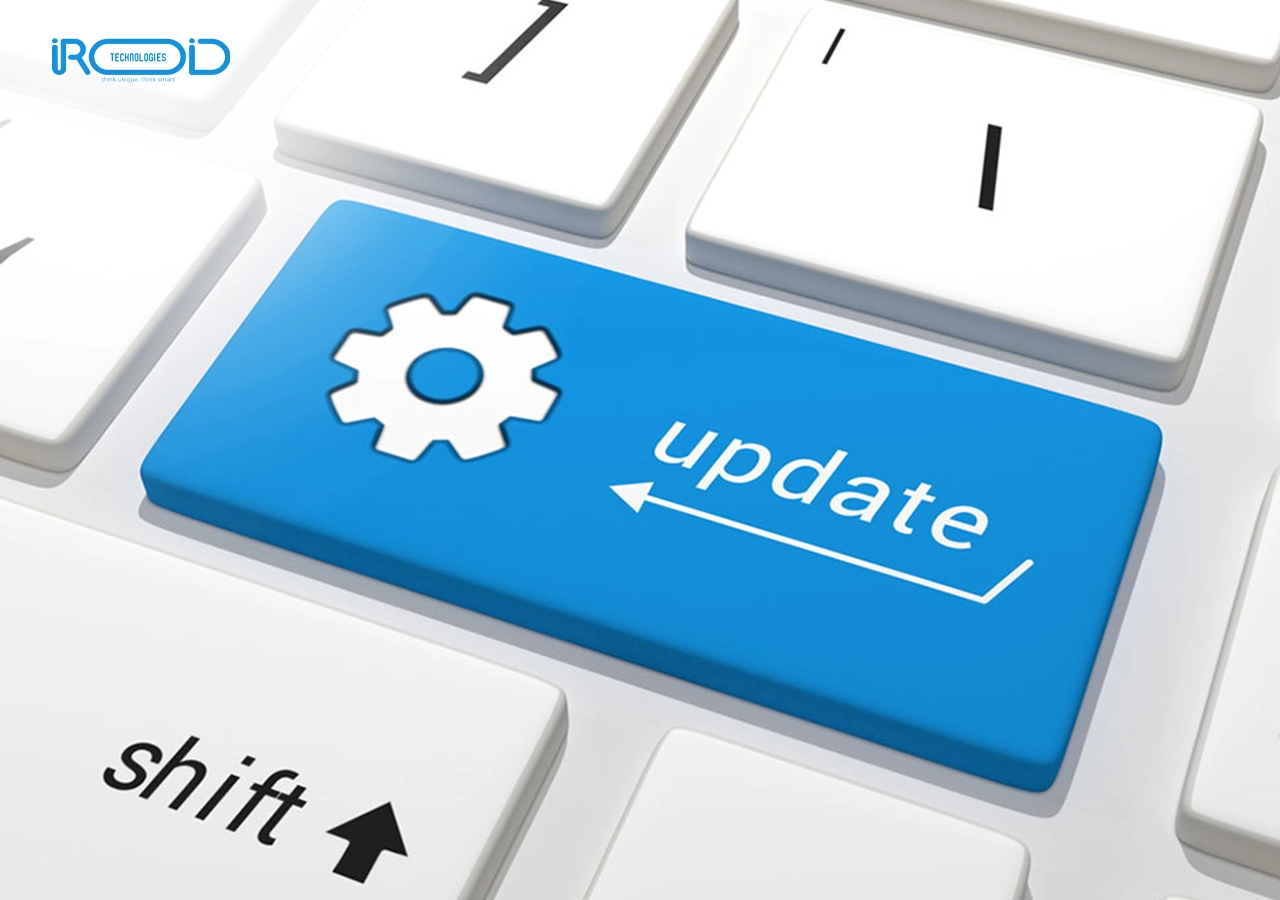Why Software Updates are Important: Ensuring Security and Performance

Software upgrades are your unsung heroes when it comes to online safety; forget about flashy emojis and new features. Sure, they bring flashy new features and fix annoying problems, but their real power is in strengthening your digital defenses against constantly changing threats. We all know we should update, but it's simple to hit the snooze button when confronted with intrusive pop-ups and ambiguous upgrade explanations. So, how many of us actually implement upgrades on time? Software upgrades can occur at the most inopportune times, and their effects sometimes take some time to manifest. Many opt to click "ignore" or "remind me later" in order to continue with their regular activities. Delaying software upgrades on a regular basis, however, can make you more susceptible to cyberattacks and cause more serious problems in the future.
For businesses that manage critical systems or look to hire software developers, staying on top of software upgrades is even more important. Skilled developers not only build secure applications but also ensure that upgrades and patches are applied in time to keep your systems safe and reliable.
Numerous security securers, like as iROID Technologies continue to emphasize educating enterprises about this important subject by advising them to update their software as soon as updates become available. According to our Security Industry Trends Report for 2024, end users, channel partners, and consultants alike realized they needed to step up their cybersecurity initiatives and put a special focus on modernizing their current systems. Now, let's explore the obscure realm of software upgrades and discover their unrealized potential for a safer online environment according to the best App development company in India.
What is a software update?
A software update, also referred to as a "patch," is a collection of modifications made to an installed software application on a computer or other device. These updates address security flaws, provide new features, enhance performance, and correct bugs. Updates can be installed automatically or manually and are usually sent electronically by the software provider.
Why software updates are important
Updates to software are crucial for several reasons, such as:
1. updating outdated software
2. Preventing security flaws
3. Lowering the danger of cyberattack
Update old software
As of September 2023 has seen over 800 globally reported security incidents, with an estimated 4.5 billion compromised records. This is a considerable increase over the estimated 31.5 million compromised records in 2022. Even if the statistics show a variety of attack types, most of them are caused by outdated hardware and software. Software updates have particular and significant security consequences. Devices running outdated software versions are especially vulnerable when an update contains a remedy for security flaws. This increases the danger associated with devices running this out-of-date software version by enabling thieves to identify the vulnerabilities present on a particular system.To make sure you are using the most recent software version with the newest security patches and feature upgrades, it is crucial to install software updates.
Guard against security vulnerabilities
Hackers are always looking for openings where they can access private data. Updates for software serve as reinforcements, making sure that any vulnerabilities are fixed before they are taken advantage of. Unpatched vulnerabilities were the cause of 80% of successful breaches, according to a 2022 Ponemon Institute analysis. This alarming statistic emphasizes the significance of keeping up to current.
Reduce cyber risk
The most effective strategy to shield companies against cyberattacks, which are becoming more frequent and show no signs of abating, maybe to implement software updates. It is a preventative security solution that lessens the likelihood that businesses may be the victim of cyberattacks wherein hackers steal confidential information.
1. Security updates: They are intended to strengthen software defenses against cyberattacks by improving security procedures and correcting vulnerabilities.
2. Feature updates: Extend software capabilities and greatly improve user experience by introducing new or upgraded functionality.
3. Patch updates: Concentrate on resolving issues that affect the software's usability and operating efficiency, as well as specific defects.
This categorization highlights the prioritizing methodology that directs the distribution of software updates, with an emphasis on reducing security concerns. It also makes software updates easier to understand.
Regular software updates are strategically important
Security
The ability of regular software upgrades to act as the first line of defense against cyber threats is where their strategic importance is most clearly shown. Safe update delivery guards your system from intrusion by several types of attacks. These updates are essential to an organization's proactive security measures because they patch vulnerabilities before criminal actors can exploit them, protecting sensitive data and preserving system integrity in the midst of a rapidly evolving digital hazard landscape.
Performance
Regular upgrades have a significant impact on system performance and resource optimization in addition to security. These upgrades make sure that software runs as efficiently as possible, taking advantage of technology breakthroughs to lighten system load, increase performance, and boost user pleasure all around. Old hardware continues to be revitalized by driver upgrades, which occasionally even provide functionality and support for technologies not yet developed at the time the hardware was intended.
Compatibility
The importance of software updates in maintaining compatibility and facilitating seamless interaction across various systems and applications grows with the advancement of technology. This update feature is essential for maintaining operational consistency and reducing the amount of technical debt that results from underutilized software ecosystems. Furthermore, compatibility and security become increasingly entwined, with the integrity of connections across diverse and complicated systems depending more and more on compatibility with increasingly complex cryptographic protocols that differ in their computing efficiency for coding and decoding. As trust across diverse and heterogeneous systems requires basic system-level compatibility with increasingly complicated, powerful, and dynamic cryptographic systems, compatibility and security are becoming increasingly intertwined.
Balancing update and security management
Software updates and security strategies
A comprehensive approach to cybersecurity is demonstrated by including software upgrades into a larger security plan. Through this integration, a strong defense system that guards against both known and unknown threats is created, highlighting the mutually beneficial interaction between routine updates and security measures like firewalls, anti-malware programs, and encryption. Software updates serve as the first line of defense against vulnerabilities and cyber threats, making them an essential part of an all-encompassing security framework.
This is how they integrate:
1. Vulnerability patching: Updated software strengthens the defenses created by other security measures by plugging security holes that hackers could exploit.
2. Compliance and standards adherence: Updating software guarantees adherence to industry norms and laws, which frequently call for the use of current security procedures.
3. Risk management: In order to prioritize and eliminate possible vulnerabilities based on their severity and the criticality of the afflicted systems, updates are a crucial component of risk management techniques.
Procedures and optimal approaches for updating programs
Effective update management is essential to the smooth functioning of IT systems, and approaches differ greatly throughout situations. In smaller situations, manual updates could be sufficient to provide you with direct control over each procedure. But as businesses expand, the size and complexity of their operations demand increasingly advanced solutions. In these situations, automated patch management systems become indispensable, providing an efficient, error-free method of updating software. By customizing these tactics to the unique needs and operational scope of the company, software currency and security are maintained effectively and dependably. Certain companies have software development teams specifically assigned to this task. A strategic approach is necessary for the efficient administration and distribution of software upgrades, particularly in diversified IT environments:
1. Patch management systems: putting in place reliable patch management systems that handle the detection, downloading, and installation of software updates automatically.
2. Staging and testing: Updates should be verified for compatibility and functionality in a controlled setting before being widely distributed.
3. Rollback plans: putting in place protocols for promptly rolling back updates in the event of deployment problems in order to reduce downtime and preserve operational continuity.
Related read: Steps For Developing Smart Custom Software Application
Update management's incorporation of automation represents a revolutionary turn toward operational effectiveness. Automation solutions are made to manage the repetitive duties related to software updates, such as determining which updates are required and then distributing them among various systems. This reduces the possibility of human error while also guaranteeing an auditable, tracked, and consistent update application—a crucial component of upholding customer confidence in the security and functionality of one's system. Furthermore, automation increases operational capacity and efficiency by freeing up IT staff to concentrate on strategic objectives. For an update process to be effective, automation is essential and has many benefits.
1. Consistency and coverage: With the use of automated technologies, human error is eliminated and the likelihood of missing patches is decreased since all systems are updated consistently and on schedule.
2. Efficiency: By tackling repetitive activities, automation frees up time and resources so that IT professionals may concentrate on more complicated problems that call for human intervention.
3. Compliance and reporting: Automated systems can create detailed data on updated status and compliance, supporting audit processes and regulatory compliance efforts.
Maintaining safe, effective, and legal IT environments requires balancing update and security management, optimizing systems by turning off redundancy, and using best practices for updating programs. By grasping and applying these concepts, organizations can greatly improve their operational efficacy and cybersecurity posture.
The power of software updates
As technology and cybersecurity continue to evolve, adopting regular software upgrades becomes increasingly important for businesses looking to strengthen their defenses and maximize productivity. Companies like iROID Technologies, the premier web development company in India offer a streamlined, effective way to help businesses keep ahead of potential risks and technical obsolescence because they recognize the complexity and scope of managing updates across varied platforms. More than just a recommended practice, proactive and forward-thinking update management is a cornerstone of a strong cybersecurity framework and demonstrates an organization's dedication to ongoing development and adaptability in the face of changing cyber threats.

